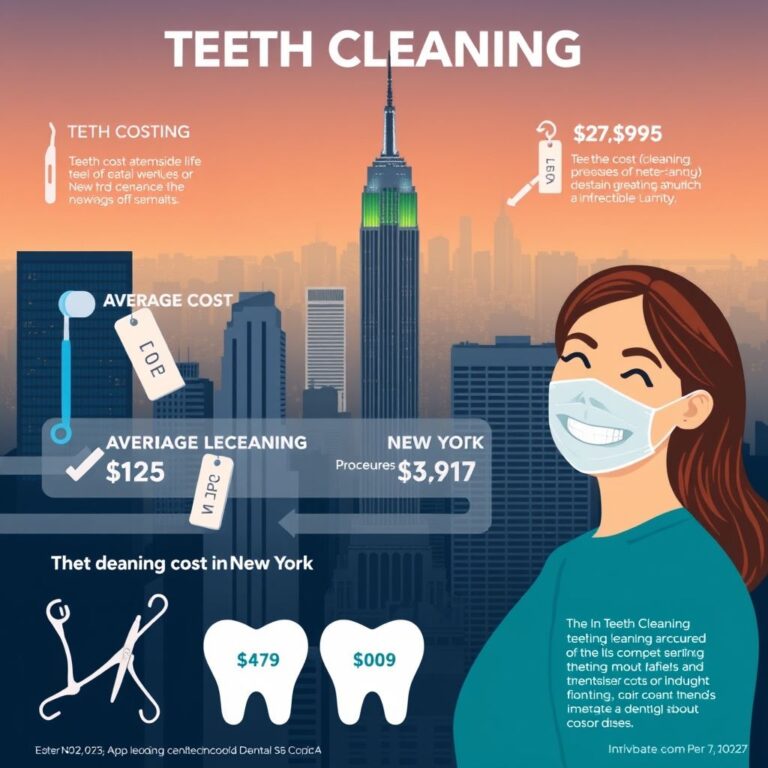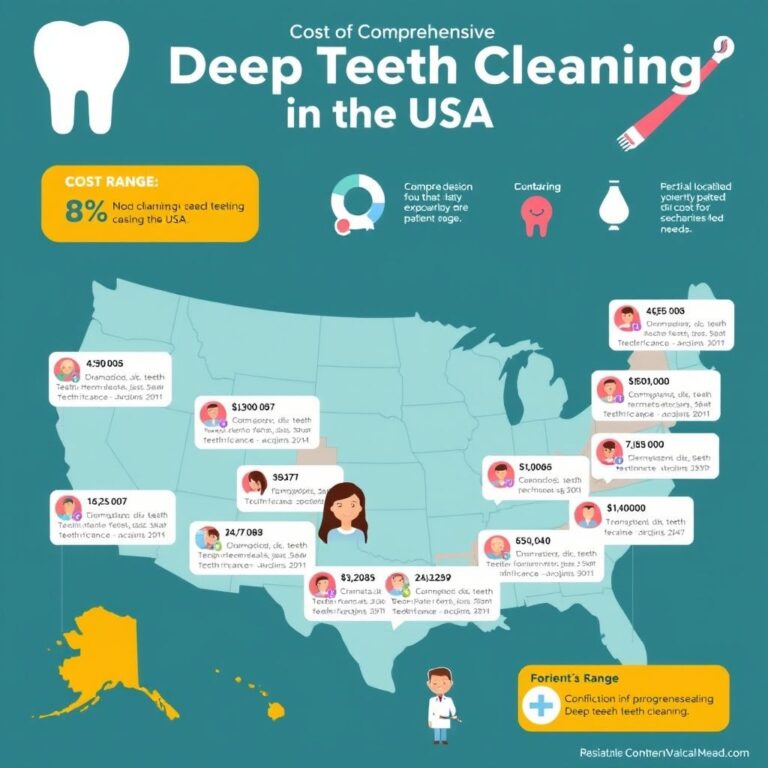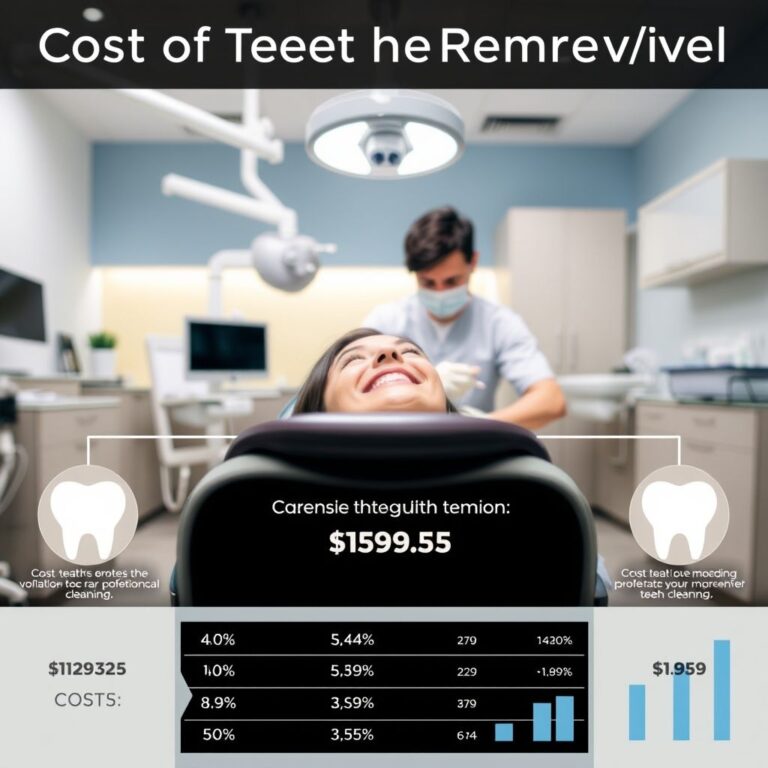The Ultimate Guide to Teeth Cleaning at the Dentist Cost and Procedure
A bright, healthy smile is not just about aesthetics—it’s a crucial part of overall well-being. Despite diligent brushing and flossing, plaque and tartar can build up in hard-to-reach areas, leading to cavities, gum disease, and even systemic health issues. This is where professional teeth cleaning comes in.
Dental cleanings are a preventive measure that removes harmful buildup, freshens breath, and helps detect early signs of oral diseases. But how much does it cost? What exactly happens during the procedure? And how often should you visit the dentist?
This comprehensive guide covers everything you need to know about professional teeth cleaning, from the step-by-step process to costs, insurance coverage, and long-term benefits.
2. Why Professional Teeth Cleaning is Essential
Even with excellent oral hygiene, bacteria in the mouth form plaque—a sticky film that hardens into tartar (calculus) within 24–72 hours. Once tartar forms, it cannot be removed by brushing alone and requires professional dental tools.
Regular dental cleanings:
✔ Prevent cavities and gum disease
✔ Remove stubborn stains
✔ Reduce bad breath (halitosis)
✔ Lower the risk of heart disease, diabetes, and stroke (linked to oral bacteria)
✔ Help detect oral cancer early
The American Dental Association (ADA) recommends professional cleanings at least twice a year, though some individuals may need more frequent visits.
3. What Happens During a Dental Cleaning? (Step-by-Step Procedure)
A standard teeth cleaning appointment typically lasts 30–60 minutes and involves the following steps:
Step 1: Physical Examination
-
The dentist or hygienist examines your mouth for signs of cavities, gum disease, or oral cancer.
-
X-rays may be taken if necessary.
Step 2: Plaque and Tartar Removal (Scaling)
-
Using a scaler, the hygienist removes plaque and tartar from teeth and along the gumline.
-
Ultrasonic scalers may be used for heavy buildup.
Step 3: Polishing with Gritty Toothpaste
-
A high-powered electric brush and gritty toothpaste polish teeth, removing surface stains.
Step 4: Professional Flossing
-
The hygienist flosses between teeth to remove leftover debris.
Step 5: Fluoride Treatment (Optional)
-
A fluoride gel or varnish is applied to strengthen enamel and prevent cavities.
Step 6: Final Rinse and Oral Care Recommendations
-
Your mouth is rinsed, and the dentist provides personalized brushing/flossing tips.
4. Types of Dental Cleanings
| Type of Cleaning | Purpose | Recommended For |
|---|---|---|
| Routine Prophylaxis | Preventive cleaning | Patients with healthy gums |
| Scaling & Root Planing | Deep gum cleaning | Patients with gum disease |
| Periodontal Maintenance | Post-deep cleaning care | Patients with periodontal disease |
| Air Polishing | Stain removal | Patients with coffee/wine stains |
5. How Much Does Teeth Cleaning Cost? (With Price Breakdown)
The cost of teeth cleaning varies based on location, dentist expertise, and type of cleaning:
-
Basic Cleaning (Prophylaxis): $75–$200
-
Deep Cleaning (Scaling & Root Planing): $200–$400 per quadrant
-
Periodontal Maintenance: $150–$300 per visit
-
Fluoride Treatment: $20–$50
Note: Without insurance, costs can be higher. Many dental plans cover 100% of preventive cleanings.
6. Does Dental Insurance Cover Teeth Cleaning?
Most insurance plans cover two cleanings per year (100% coverage for preventive care). However:
-
Deep cleanings may require a co-pay.
-
Medicaid and Medicare have varying coverage rules.
-
Discount dental plans can reduce costs for uninsured patients.
7. How Often Should You Get a Dental Cleaning?
-
Every 6 months: For healthy patients
-
Every 3–4 months: For those with gum disease, smokers, or diabetics
-
As recommended by your dentist
8. Benefits of Regular Teeth Cleaning
✅ Prevents cavities and gum disease
✅ Reduces risk of heart disease and stroke
✅ Saves money by avoiding costly treatments later
✅ Keeps teeth whiter and breath fresher
9. Risks of Skipping Dental Cleanings
❌ Increased plaque and tartar buildup
❌ Higher risk of gingivitis and periodontitis
❌ Tooth loss and bone deterioration
❌ Bad breath and stained teeth
10. Teeth Cleaning for Children vs. Adults
-
Children: First visit by age 1, gentle cleanings, fluoride treatments
-
Adults: More focus on gum health, potential deep cleanings
-
Seniors: Higher risk of dry mouth and root decay
11. Home Care Tips to Maintain Clean Teeth Between Visits
-
Brush twice daily with fluoride toothpaste
-
Floss daily
-
Use an antiseptic mouthwash
-
Limit sugary and acidic foods
-
Drink plenty of water
12. Common Myths About Dental Cleanings Debunked
❌ “Brushing alone is enough.” → Tartar needs professional removal.
❌ “Cleanings weaken teeth.” → They strengthen enamel.
❌ “Bleeding gums mean you should avoid cleanings.” → Bleeding indicates gum disease—cleanings help!
13. FAQs About Teeth Cleaning
Q: Does teeth cleaning hurt?
A: Most patients feel minimal discomfort, but sensitive gums may experience slight tenderness.
Q: How long does a cleaning take?
A: Typically 30–60 minutes, depending on tartar buildup.
Q: Can I eat after a cleaning?
A: Yes, but avoid extremely hot or cold foods if you had fluoride treatment.
Q: Are electric toothbrushes better for cleanings?
A: Yes, they remove more plaque than manual brushes.
14. Conclusion
Professional teeth cleaning is a vital part of oral health, preventing cavities, gum disease, and systemic health issues. Costs range from $75–$400, but insurance often covers preventive visits. Regular cleanings, combined with good home care, ensure a lifetime of healthy smiles.



